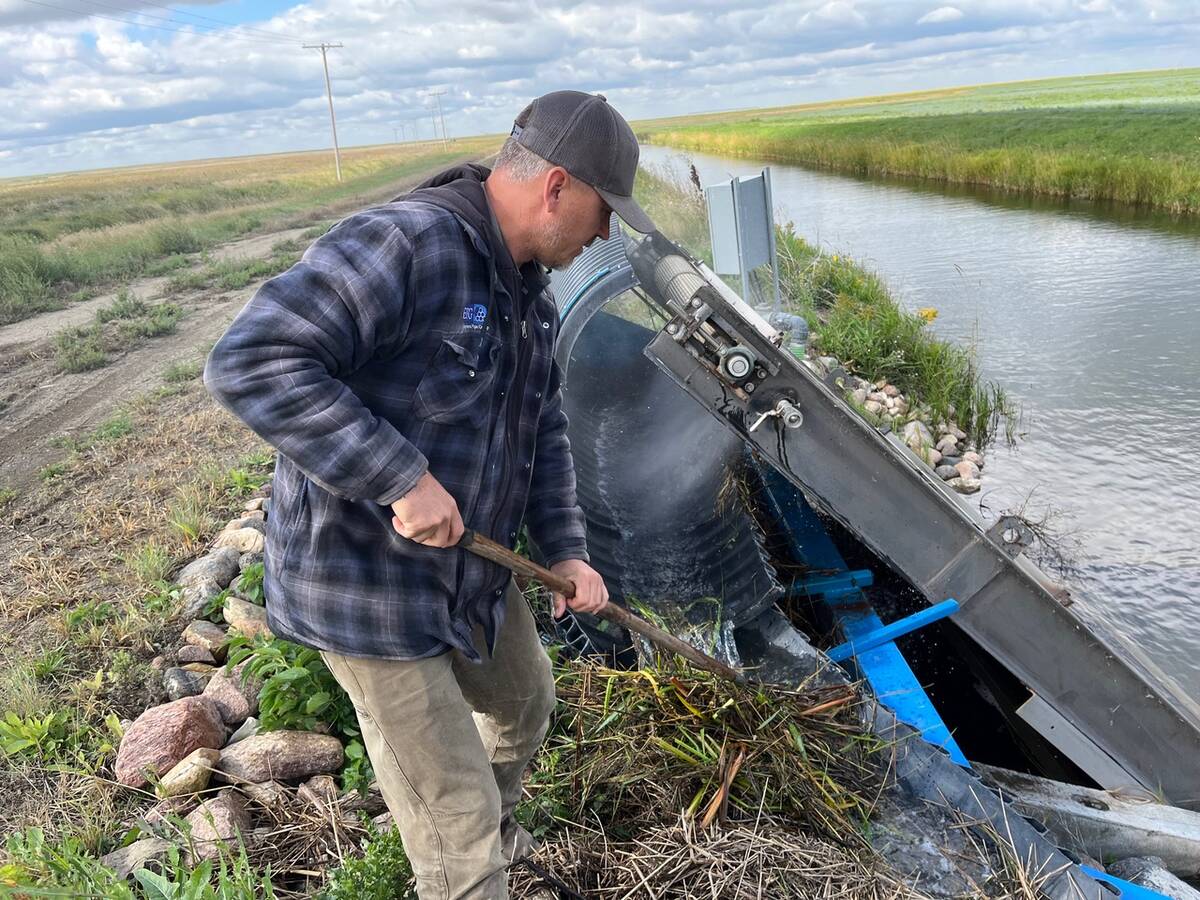Saskatchewan Wheat Pool’s trash has become another company’s treasure.
A conglomeration of farmers, businesspeople and other investors from Bruno, Sask., has resuscitated a feed mill discarded by the grain company one year ago.
The pool closed its Heartland Feeds plant in April of last year, saying the 30-year-old facility required a substantial capital injection and faced too much local competition to be a viable asset.
That decision rankled a group of area residents who didn’t want to lose the town’s largest employer. They put together a funding drive that attracted 175 shareholders who invested $385,000 to salvage the mill.
Read Also

Saskatchewan farmer uses tile drainage to manage water
The integration of both irrigation and tile drainage results in higher yields, water efficiency, improved soils and less nutrient runoff, says one producer.
A deal to buy the facility from the pool for $375,000 was finalized on Dec. 31 and debt financing is in place to cover operational expenses.
Most of the equipment has been cleaned and refurbished and the plant is up and running, almost one year to the day from when 23 people lost their jobs.
The facility is processing raw screenings into pellets for the feedlot industry and expects to be producing complete feeds and supplements for livestock producers this month.
“Every time I stop by there, which is about once a week now, I just feel so good about it, that it’s this far along and ready to open,” said Bruno Feeds president Lambert Hering.
He invested in the plant to maintain an outlet for his feed grain, revitalize a critical town asset and create a profitable business.
He worked at the plant between 1979 and 1989 when the Pulvermacher family owned it.
“I never saw the books but I felt they always made decent money.”
A recent feasibility study commissioned by a core group of investors convinced him the facility still has good revenue-earning potential.
He thinks the pool was too focused on producing feed for its own hog business, overlooking other potential sales opportunities.
By contrast, Bruno Feeds will be a multi-species facility, making everything from rabbit food to dairy cattle rations.
Hering said there will be a growing local demand for feed pellets if the province follows through on its plan to expand the livestock sector.
“As long as we keep our costs under control, I think we’ll do fine.”
Vern Racz, director of the Prairie Feed Resource Centre, said the new mill should focus on offering specialized feed products, such as a high quality barley feed for hogs and identity preserved feeds.
The mill has to find its niche, he added, because like the food market, the feed market is becoming segmented and specialized. Bruno Feeds needs to locate buyers willing to sign premium-priced contracts to secure pellets that contain exactly what they are looking for. If it can do that, it will be clear sailing ahead, Racz said.
“I think they’ll probably have a good chance of making it.”
Fred Keys, the mill’s general manger, said the plant is already taking steps toward offering a specialized product that should appease customers concerned about food safety issues.
Bruno Feeds is attempting to become certified under the Hazard Acute Critical Control Points system, specializing in manufacturing only plant-based pellets. This meant eliminating ruminant byproduct remnants from when Sask Pool owned the facility.
“We had to totally clean the mill from top to bottom because we’re opening it prohibited material-free. There will be no bovine meat or bone meal in there at all.”
In addition to a thorough cleaning, all the equipment has been inspected and refurbished and Keys doesn’t think the company needs the kind of capital injection the pool felt was required to modernize the plant.
“It will function fine. It will run. There shouldn’t be any problems with it at all.”
One of the biggest developments to date has been the formation of a “strong alliance” with Landmark Feeds.
Landmark will supply the mill with premixes and micronutrients as well as nutritional and management expertise, while Bruno Feeds will manufacture and distribute Landmark’s line of dairy feeds in the province.
Keys said customers have already placed orders for complete feeds and supplements. He expects to be producing 30,000 tonnes of pellets by the end of the first year of operation and to be “maxed out” at 50,000 tonnes after two years.
Bruno Feeds is expected to provide 17 jobs when it reaches full capacity, a prospect Hering finds gratifying.
“I’m just overwhelmed how things have worked out.”

















